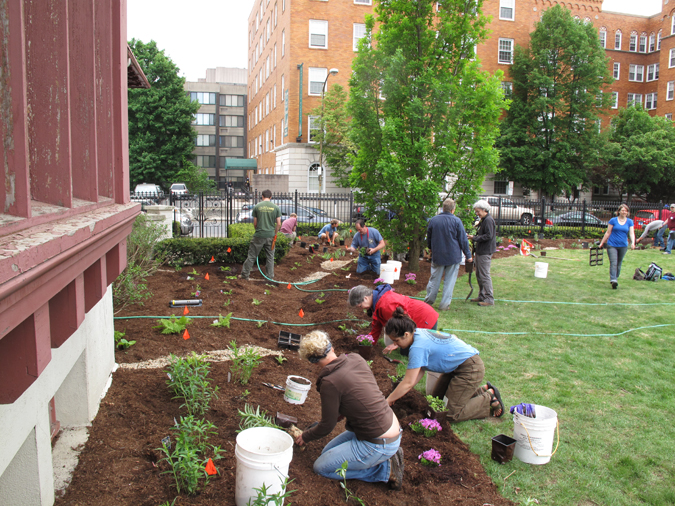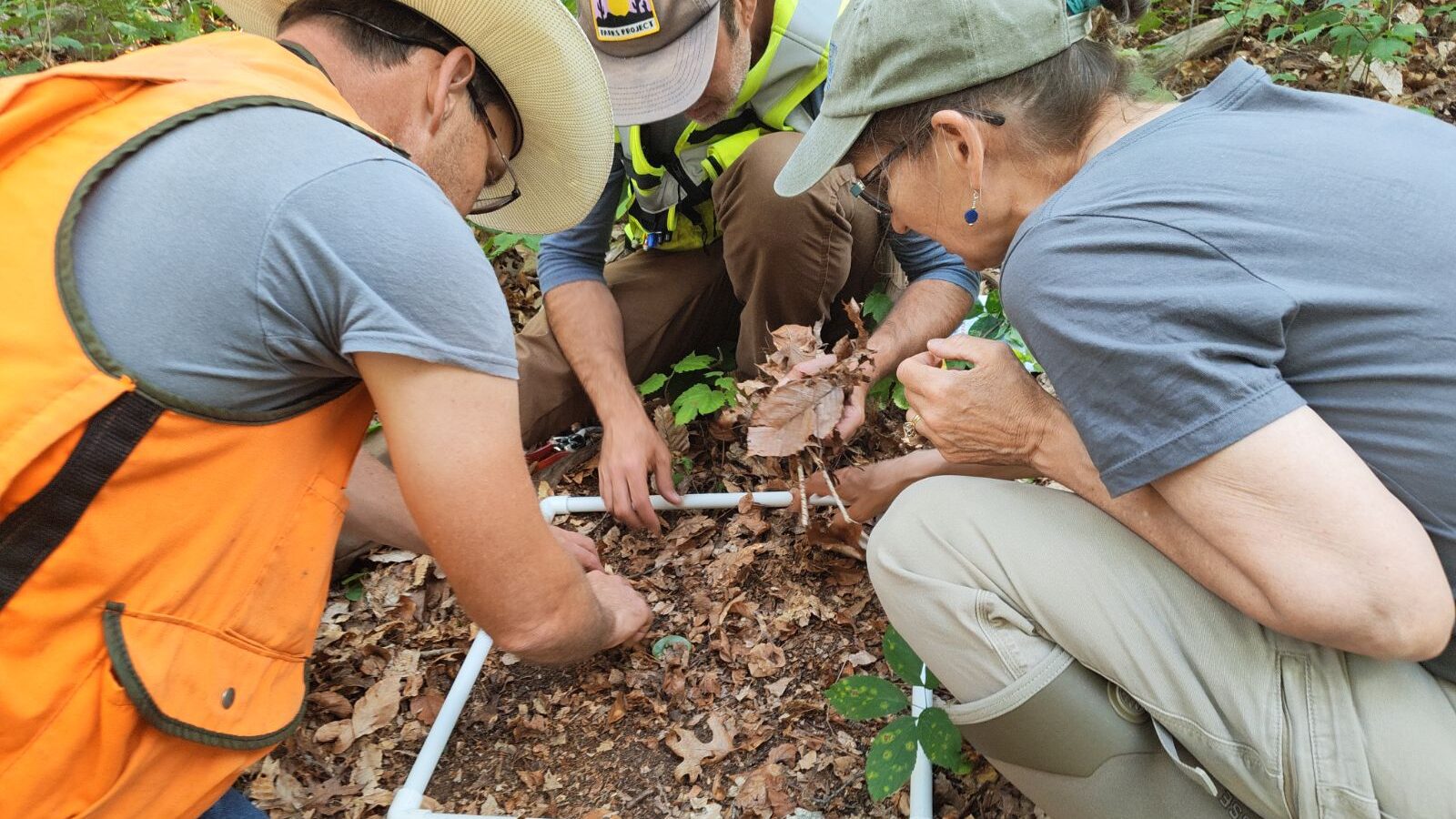
Springfield Museums Rain Garden
First of Five Rain Gardens
This month Regenerative Design Group completed a 2,800 square foot rain garden at Springfield Museums. This is the first rain garden of five to be constructed this summer within the city of Springfield, MA as part of the Springfield Rain Garden Project (SRGP), a partnership between the Pioneer Valley Planning Commission (PVPC) and RDG.
Last fall, PVPC awarded RDG with a contract to design and construct up to ten rain gardens in Springfield, as part of an initiative to help protect and improve Springfield’s waterways from urban storm runoff. Funding for the initiative comes from a consent decree between Clean Water Action and Doncasters Inc. over illegal dumping in Poor Brook, one of the Connecticut River’s tributaries in Springfield.
On May 16th, RDG led a hands-on workshop on rain garden design and construction at Springfield Museums. The museum’s rain garden was complete two hours and 500 plants later, thanks to help from participants including Conway School of Landscape Design students, Master Gardeners, interested locals, and the director of the Museum, David Stier.
Catching and Sinking Rainwater
The rain garden at Springfield Museums will absorb half the rainwater that falls upon the Museums’ Kilroy building. Gutters collect the roof water and downspouts direct the runoff into gentle swales that lead to the garden’s main basin where the storm water is stored and infiltrated. The capacity of the rain garden is approximately 5,000 gallons, which translates to a 2.5-inch rainstorm over twelve hours.
Urban storm water runoff is a significant pollution problem in the Springfield area because it contributes to combined sewer overflows, the largest source of bacteria pollution in the Connecticut River. Rain gardens are a best management practice that has been demonstrated to be highly effective in addressing urban storm water runoff as “green infrastructure”, which recharges storm water into the ground on-site, rather than flowing into the city’s sewer system which can get overwhelmed during heavy rain events.



Comments (0)